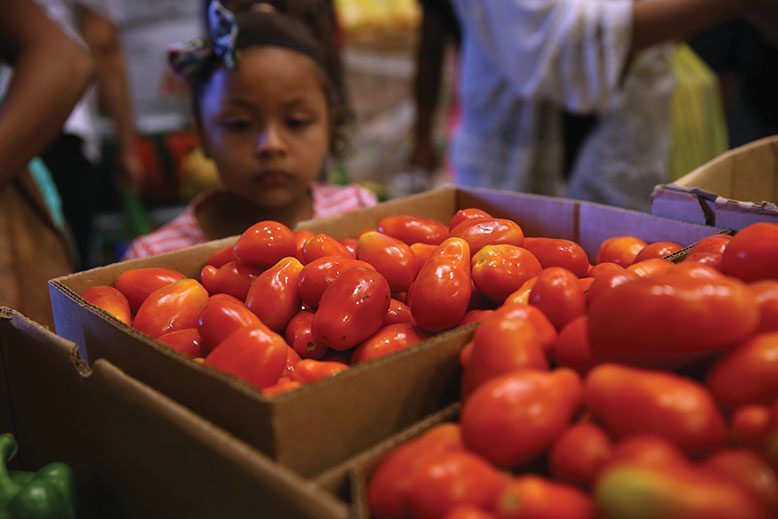
Food insecurity is a huge issue in our state and across the nation. According to the Community FoodBank of New Jersey (CFBNJ), the state’s largest anti-hunger and anti-poverty organization, 11.8 percent of Jerseyans—and almost 17 percent of our children—go hungry each year. That means more than 1 million people struggle with hunger in our state at any moment.
Hungry families face tough decisions, pitting food against other essentials. “They are choosing to pay the rent, to go to the doctor, to get their medicine and to pay their utility bills,” Diane Riley, CFBNJ’s director of advocacy, recently told NJTV News.
Often those choices lead hungry families to fast food and other unhealthy options that are less expensive than healthier alternatives, such as produce and non-processed foods. That can create other problems besides hunger.
“When we were children, we thought of hunger as a [underweight] body type or as something that we saw overseas,” says CFBNJ president and CEO Debra Vizzi. “But hunger on a child looks very different today. The children of New Jersey really need incredible attention around this issue, because this is probably the first time in our generation where we see a food-insecure child, a hungry child, that is perhaps obese.”
Hunger is also associated with diabetes, celiac disease and a general failure to maintain robust health. It affects seniors as well as children. In fact, seniors are using the FoodBank’s services at an increasing rate. Riley says many seniors who can’t afford meals are hesitant to sign up for a program like SNAP (which offers nutrition assistance to low-income families) or food stamps because they don’t think of themselves as poor. And it’s not just seniors who are reluctant to use such services. A report by the CFBNJ showed that nearly a quarter of eligible New Jerseyans do not participate in the food-stamp program.
Unfortunately, many think of helping the hungry only around the holidays, says Vizzi. “Hunger is a 365-day-a-year problem, and the most vulnerable time for the hungry is during the summer when children are out of school and don’t have breakfast or lunch.”
Surprisingly, according to a CFBNJ report, only about 19 percent of the state’s eligible kids take part in New Jersey’s summer meal program.
Vizzi says the problem of hunger requires a two-pronged strategy. First, we need to build a movement to help earners provide for their families; 50 percent of our families have a working person in their household. Second, we need to make sure our effort to feed the hungry “incorporates not only the quantity of food that we put out as a food bank, but the quality of food that is nutritious and healthy.”
Individuals can make a difference. Last year, the FoodBank had more than 40,000 volunteers, but more are always needed. You can also help through your house of worship, at work or with your neighbors by starting a food drive.
“If we want to make a better world for our children, this is a key piece moving forward,” says Vizzi. “When kids are hungry, there are negative outcomes related to health, poor school performance and behavioral concerns. What is it like to be hungry? There are children who will go without a meal today. Children in every community in the state are experiencing hunger, that is a startling fact.”
